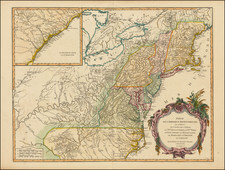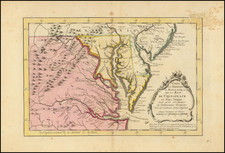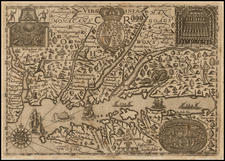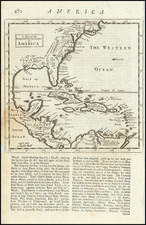Extremely rare American battle plan showing the Siege of Savannah, engraved by Charles Balthazar Julien Fevre de Saint-Memin for
Smith's Monthly Military Repository. Quite possibly the earliest known engraving by Saint-Menin.
Smith's relatively unassuming Plan of the Siege of Savannah brings together the work of one of the most important American Portrait artists Charles Balthazar Julien Fevre de Saint Memin with one of the rarest American published books on the Revolutionary War.
Saint-Memin was born into a French Aristocratic family in Dijon in 1770. In 1784, he began attending the Royal Miltary Academy in Paris. His father and grandfather both had significant art collections, and Saint-Memin began drawing landscapes a early as 1788. When the French Revolution began, Saint-Memin fled with his family to Switzerland, where they remained for 3 years after their hereditary nobility was abolished. During this time, all members of the French Nobility who did not return to France were named as conspirators, sentenced to death and had their estates confiscated and sold. Saint-Memin and his father set out in 1793 for Haiti, where Saint-Memin's father owned a large sugar cane estate, but were forced to stay in New York when the political unrest of the French Revolution reached Haiti before their arrival.
In New York, Saint-Memin learned engraving as a means of supporting himself and his father. It was his friend John Livingstone, Chancellor of New York, who encouraged the pursuit. Saint-Memin was apparently a very quick study, teaching himself the art of engraving from books he obtained from the public library. While Saint-Memin would go on to become perhaps the most important portrait artist of his time, Stauffer identifies only 4 known engravings by Saint-Memin other than his portrait work, two birdseye views of New York, a small business card and this rare Plan of the Siege of Savannah, all apparently engraved in 1796.
It was in this same year of 1796 that Saint-Memin embarked upon a career in portraiture which would make him one of the most famous of all early American portrait artists. Saint-Memin met and formed a partnership with Thomas Bluget de Valdenuit, who taught Saint-Memin to use a new drawing device, which Saint-Memin called a physiognotrace. The new device, an example of which Saint-Memin built with his own hands, allowed him to create a portrait and engrave multiple copies for his clients.
From 1796 to 1810, Saint-Memin devoted himself to making profile portraits using this new process, which allowed him to draw a human profile with mathematical accuracy. St. Memin also constructed a pantograph, which allowed him to reduce the size of the images to images as small as two inch circles. Saint-Memin created some of the most memorable images in the history of American portraiture. Nearly a thousand Americans sat for portraits, among them Thomas Jefferson, Paul Revere, Mother Seton, Meriwether Lewis, and Charles Willson Peale. He returned to France in 1814 after the fall of Napoleon and became the director of the museum of fine arts in Dijon, where he remained until his death in 1852.
Saint-Memin's plan of Savannah appeared in Charles Smith's extremely rare Monthly Military Repository, published in 1796-97 in 2 volumes. Only 2 complete examples and 1 incomplete example of the work have appeared at auction in the past 40 years. Smith's fine magazine gives an authentic and interesting account of the battles of the Revolutionary War, together with other material relating to military events of the period. The parts relating to the American war are based on information furnished by Baron Steuben and General Gates. These portions were subsequently reset and republished under the title The American War from 1775 to 1783. The 12 plates engraved for this work were performed by Tanner, Tisdale, and others and are considered an important feature of the work. These comprise portraits of Washington, Greene, and Wayne, and views and plans of Breed's Hill; Quebec; View of Quebec (by Roberts); Engagement at White Plains; York & Gloucester, Va.; Burgoyne at Saratoga; Siege of Charlestown; Siege of Savannah; and a Scale of 250 toises.
A map of considerable importance for its both its rarity and as an early example of Saint-Memin's work in America, which likely pre-dates the commence of his portraiture business and represents one of the earliest obtainable artifacts of his professional life in America.













![[Revolutionary War Plans of New York, Boston, Charleston, Delaware River to Philadelphia & Havana] Various Plans and Draughts of Cities, Towns, Harbours &c . . .](https://storage.googleapis.com/raremaps/img/small/83450.jpg)
